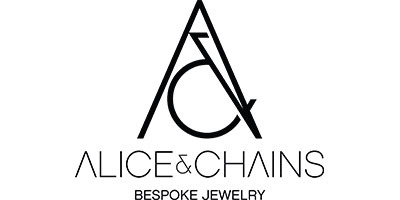How much is that Ring in the Window?

Alice & Chains Jewelry Blog
| Jewelry with a story |
A frequent question about the price of jewelry is, why two pieces identical in size, color, and weight have a prices so dramatically different from one store to another? Historically speaking the value of a piece of jewelry has been heavily weighted upon the perceived value that a jeweler or retailer thinks a potential buyer would be willing to pay. The deeper the history, its provenance, the more renown the designer, or even the higher the popularity or rarity of the stones, the value is deemed greater because those things are seen as adding value. All of which are debatable, and truly the beauty in the piece lies in the eye of beholder.
What if piece does not have history? Or a fancy designer behind them?
Take for example mass produced jewelry at the plethora of locations like Kay Jewelers, Jared, Blue Nile, or any of the many other locations that crank out the same settings, stone sizes and shapes domestically and internationally . These pieces are fresh for history making, there's no juju hanging onto them, and no well-known designer behind them. What are you paying for in places like these? Mostly their advertising budgets, branding, numerous employees, and that cookie cutter storefront located everywhere.
What if it comes from a fancy designer?
We have to break this answer into an A & B because the jewelry world is inundated with designers now and consumers purchase from a variety of designers/retailers for a variety of reasons.
A. Legacy Designers - The Tiffany's, Cartier, Van Cleef & Arpel, Harry Winston, & Verduras of the jewelry world have their own history behind them and the pieces they create. What are you paying for? These jewelry houses have a design aesthetic they usually try to maintain, historical reputation, not to mention their arsenal includes a powerhouse of designers, production teams (some are vertically integrated), celebrities, press stories, rare stones and the ability to create fabulous, one-of-a-kind creations for those rare stones, posh brick and mortar global locations, security for stores and red-carpet events, and much, much more. Companies like these have been around for the longer, have had their own ups & downs, and now have a higher perceived value automatically inherited for generations to come.
B. Casual Designers - Designers like David Yurman, Alex & Ani, Ippolita, and the many designers you find in high-end retail locations like Barney's, Bloomie's, Saks, etc. Most of these places sell jewelry that is mass-produced, in lesser quantities than say Blue Nile, but is not really considered historical and/or typically one-of-a-kind. What are you paying for? Most likely, their massive advertising and marketing budgets. These are the types of companies you see everywhere - ads in magazines, billboards, the walls of the subway, bus stations, they inundate our world with pictures of beautiful, semi-nude humans, looking seductive or like they're having the best time in the world. Other reasons you may pay more for these brands - their recently elevated status as the it-designer name, celebrity branded-jewelry, and/or they're selling wholesale/retail - which means the retailers jack the prices up to cover their own marketing, rent, employees, etc.
What makes a stone rare?
At Alice & Chains Jewelry clients are told gemstones are the only true rare stones. The diamond market is overly-saturated - diamond engagement rings, diamond eternity bands, diamond earrings, diamond encrusted pendants, diamond tennis bracelets - they're accessible at all price points (Wal-Mart & Costco even sell engagement rings). What makes a gemstone special? It's color - it can never be produced again. A gem is cut specifically to refract the light in a manner that brings forward the best, brightest, and most saturated color the stone is capable of producing. This specialty is based on the minerals that surround the stone during its creation. The color after the earth has created it can only be drawn out of the stone by a lapidary artist that can look at a gem its rawest, not-necessarily prettiest, or most refractive form and see the color, cut it, producing an extraordinary vision of color.
Who do we recommend purchasing jewelry from?
Directly from designer!! Support the true talent. The ability to make something you find so incredibly beautiful that you want to spend your hard earn money on it and adorn yourself is my answer. Building a history, telling that story why you bought it, what the designer was like (whether creative, quirky, or cranky) gives an inherited value to that piece you just purchased. Jewelry with sentimental value does not often get re-sold, it is passed on through generations. Jewelry with a name ends up in an auction house because of its monetary value - which, if that's what you want, by all means buy it, because at the end of the day it is beautiful too!


Comments on this post (1)
Muchas gracias. ?Como puedo iniciar sesion?
— kzxmurghvz